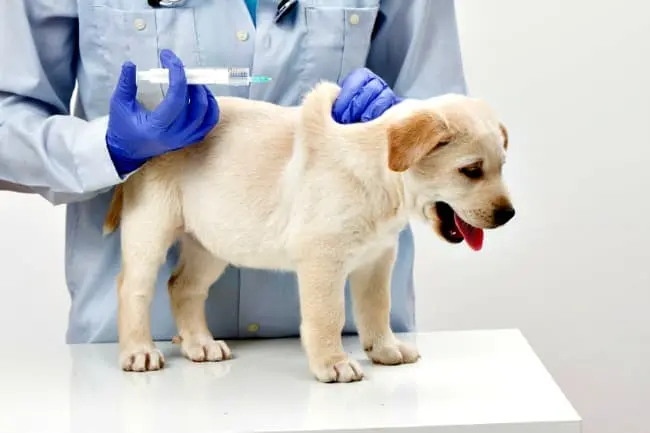
Bringing home a new puppy is exciting, but it can quickly become overwhelming when behavioral issues emerge. As a professional dog trainer with over 15 years of experience, I’ve helped countless families transform challenging puppy behaviors into positive habits. The good news? Most puppy behavior problems are completely normal and can be resolved with the right approach.
This comprehensive guide will help you identify common puppy behavior problems, distinguish between normal developmental behaviors and concerning red flags, and provide practical solutions to create a well-behaved canine companion.
Table of Contents
Normal vs. Abnormal Puppy Behaviors
Understanding the difference between normal developmental behaviors and potentially concerning issues is crucial for effective training and intervention.
Normal Puppy Behaviors
Most puppies exhibit these behaviors as part of healthy development:
- Mouthing and nipping: Puppies explore the world with their mouths and may playfully nip during interaction.
- Chewing: Teething puppies (3-7 months) naturally seek relief by chewing on objects.
- Jumping: Puppies jump to greet people and gain attention.
- Playful wrestling: Rough play with littermates or other dogs helps develop social skills.
- Occasional accidents: House training takes time and consistency.
- Barking or whining: Vocalization is how puppies communicate needs.
- Curiosity and exploration: Investigating new environments is essential for development.
Red Flags: When to Be Concerned
While many behaviors are normal, these signs may indicate potential issues:
- Severe biting that breaks skin: Puppies should develop bite inhibition by 8-10 weeks.
- Excessive fear or aggression: Growling, snapping, or cowering without provocation.
- Resource guarding: Aggressive protection of food, toys, or locations.
- Persistent crate soiling: Healthy puppies typically avoid soiling their sleeping area.
- Self-injury when alone: Bloody paws or mouth from escape attempts.
- Inability to settle: Extreme hyperactivity without calm periods.
- Difficulty recovering from fear: Prolonged stress reactions to normal stimuli.
Early intervention for these concerning behaviors is essential. Research published in the Journal of Veterinary Behavior found that addressing problematic behaviors before 16 weeks of age significantly improves long-term outcomes.
One of the most important skills to establish during this critical period is a reliable recall command. Teaching your puppy to come when called isn’t just convenient—it’s potentially life-saving. Our comprehensive guide to dog recall training provides proven methods for building this essential skill starting as early as 8 weeks old, using positive reinforcement techniques that work with your puppy’s natural learning abilities.
Common Puppy Behavior Problems
Let’s explore the most frequent puppy behavior challenges and their solutions:
1. Biting and Mouthing
Puppy biting is among the most common complaints from new puppy parents. While normal, it requires consistent training to prevent it from becoming problematic.
Why Puppies Bite:
- Teething discomfort (3-7 months)
- Social play and exploration
- Excitement or overstimulation
- Attention-seeking behavior
Solutions:
- Provide appropriate chew toys and redirect biting to these items
- Use a consistent verbal marker like “ouch” or “no bite” when teeth touch skin
- Briefly stop play and withdraw attention when biting occurs
- Teach and reward gentle mouth interactions
- Never punish physically, which can increase fear or aggression
For puppies whose biting persists despite consistent redirection and training efforts, a more comprehensive approach addressing all possible triggers and using advanced interruption techniques may be necessary to break the cycle.
2. House Training Challenges
Accidents are inevitable during the house training process, but consistent training can minimize them.
Why House Training Takes Time:
- Puppies have limited bladder control until about 6 months of age
- They haven’t yet learned to recognize the sensation of needing to eliminate
- Environmental factors can disrupt training progress
Solutions:
- Establish a consistent bathroom schedule (after waking, eating, playing, and before bedtime)
- Use positive reinforcement when your puppy eliminates in the appropriate location
- Supervise constantly or confine to a properly-sized crate when supervision isn’t possible
- Clean accidents thoroughly with enzymatic cleaners to remove odors
- Avoid punishment for accidents, which can create fear and confusion
3. Destructive Chewing
Chewing is natural for puppies but can become destructive when directed at inappropriate items.
Why Puppies Chew:
- Teething discomfort
- Boredom or excess energy
- Anxiety or stress
- Natural exploratory behavior
Solutions:
- Puppy-proof your home by removing or securing valuable items
- Provide a variety of appropriate chew toys with different textures
- Rotate toys regularly to maintain interest
- Use bitter apple spray on items that cannot be removed
- Increase exercise and mental stimulation to reduce boredom-based chewing
4. Excessive Barking or Whining
Vocal puppies can be challenging, especially in apartments or close neighborhoods.
Common Causes:
- Attention-seeking behavior
- Separation anxiety
- Excitement or overstimulation
- Fear or alerting to environmental changes
Solutions:
- Identify and address the underlying cause
- Teach a “quiet” command paired with positive reinforcement
- Provide appropriate outlets for energy and mental stimulation
- For crate whining, avoid reinforcing the behavior by responding only when the puppy is quiet
- Use sound masking or white noise for environmentally-triggered barking
Crate whining deserves special attention as it’s one of the most challenging puppy behaviors for new owners, often requiring a systematic desensitization approach that balances the puppy’s comfort needs with the importance of establishing healthy alone-time habits.
5. Jumping Up
Jumping is a natural greeting behavior that becomes problematic as puppies grow larger.
Why Puppies Jump:
- Excitement during greetings
- Attention-seeking behavior
- Attempting to reach faces for interaction
Solutions:
- Ignore jumping by turning away and withholding attention
- Reward all four paws on the floor with attention and treats
- Teach an incompatible behavior like “sit” for greetings
- Use a leash to prevent jumping during initial greetings
- Ensure all family members and visitors follow the same protocol
For more tips on addressing common puppy behavior problems, check out this guide from the ASPCA.
The Science Behind Puppy Behavior Issues
Understanding the biological and developmental factors influencing your puppy’s behavior can help you respond more effectively.
Critical Developmental Periods
Puppies experience several crucial developmental stages that impact behavior:
- Neonatal Period (0-2 weeks): Minimal environmental awareness, focused on nursing and sleeping.
- Transition Period (2-3 weeks): Eyes and ears open, beginning environmental awareness.
- Socialization Period (3-12 weeks): Critical window for positive exposure to people, animals, environments, and experiences.
- Juvenile Period (12 weeks-6 months): Testing boundaries, refining social skills, and establishing pack position.
- Adolescence (6-18 months): Hormonal changes can lead to regression in training and testing of established rules.
Research shows that proper socialization during the critical 3-12 week period significantly reduces the likelihood of behavior problems later in life. A study in the Journal of the American Veterinary Medical Association found that puppies who attended socialization classes before 16 weeks of age showed fewer behavioral problems as adults.
Breeds known for their intelligence and trainability, like the English Labrador Retriever, typically respond exceptionally well to early training and socialization—making them excellent choices for first-time dog owners willing to invest time in proper puppy development.
Brain Development and Behavior
Your puppy’s brain is still developing, which affects their ability to:
- Control impulses
- Process emotional responses
- Form lasting memories
- Connect actions with consequences
This developmental timeline explains why puppies may seem to “forget” training they previously mastered or struggle with self-control in exciting situations.
Effective Solutions for Puppy Behavior Problems
The Foundation: Management and Prevention
The first step in addressing anxiety and behavior problems is creating an environment that prevents problem behaviors from occurring. This involves:
- Puppy-proofing: Remove opportunities for destructive behavior
- Proper confinement: Use crates, playpens, or baby gates when supervision isn’t possible
- Structured routine: Establish consistent schedules for feeding, elimination, play, and rest
- Management tools: Leashes, head halters, and harnesses can prevent problem behaviors during training
Positive Reinforcement Training
Scientific research consistently shows that positive reinforcement training is most effective for puppies. This involves:
- Capturing desired behaviors and rewarding them immediately
- Using high-value rewards that motivate your specific puppy
- Marking correct behavior with a clicker or verbal marker
- Consistency in cues and expectations across all family members
Exercise and Mental Stimulation
Many behavior problems stem from insufficient physical and mental exercise. A tired puppy is generally a well-behaved puppy. Aim for a balanced approach:
- Physical exercise: Age-appropriate walks, play sessions, and safe socialization
- Mental stimulation: Training sessions, puzzle toys, sniff walks, and food-dispensing toys
- Enrichment activities: New environments, novel experiences, and controlled challenges
For most puppies, the formula is approximately 5 minutes of structured exercise per month of age, twice daily, plus mental stimulation throughout the day.
Building Confidence
Many behavior problems stem from fear or insecurity. Building your puppy’s confidence can prevent or resolve issues:
- Positive exposure: Gradual introduction to new experiences with positive associations
- Success-oriented training: Setting up training scenarios where your puppy can succeed
- Confidence-building activities: Agility equipment, trick training, and nose work
- Predictable interactions: Clear communication and consistent responses to behaviors
Preventing Future Behavior Problems
Early Socialization
Proper socialization between 3-14 weeks of age is crucial for preventing behavior problems. This involves positive exposure to:
- Different people (ages, genders, appearances)
- Various environments (urban, rural, different floor surfaces)
- Other animals (dogs, cats, livestock where relevant)
- Sounds (traffic, appliances, storms, fireworks)
- Handling and restraint (touching paws, ears, mouth examination)
A well-socialized puppy is less likely to develop fear-based behavior problems later in life. Even after the critical socialization period ends, continue exposing your puppy to new experiences in a positive manner.
Consistent Training
Consistency is key to successful training. Ensure:
- All family members use the same cues and rewards
- Rules remain consistent (e.g., if the puppy isn’t allowed on furniture, this applies always)
- Training sessions are short (5-10 minutes) but frequent
- Behaviors are reinforced in various environments and situations
Proactive Health Monitoring
Some behavior problems have medical causes. Regular veterinary care helps identify and address:
- Pain (which can cause irritability or aggression)
- Hormonal imbalances
- Neurological issues
- Digestive discomfort
- Vision or hearing problems
When to Seek Professional Help
Don’t hesitate to consult professionals for behavior concerns. Early intervention is key to successful outcomes.
Signs Professional Help Is Needed:
- Aggression toward people or other animals
- Extreme fear or anxiety
- Behavior problems that worsen despite consistent training
- Self-injurious behaviors
- Persistent house soiling beyond expected developmental stages
- Sudden changes in behavior
Professional Resources:
- Veterinarian: Always start with a medical evaluation to rule out health issues
- Certified Professional Dog Trainer (CPDT): For basic training and mild behavior issues
- Veterinary Behaviorist: For complex or severe behavior problems
- Applied Animal Behaviorist: For scientific behavior modification programs
FAQs About Puppy Behavior Problems
How long does it take to resolve puppy behavior problems?
The timeline varies depending on the specific behavior, the puppy’s age and temperament, and the consistency of training. Simple issues like jumping might improve within weeks, while complex problems like fear-based behaviors may require months of consistent work.
Can puppy behavior problems resolve on their own?
Some mild developmental behaviors may diminish naturally as puppies mature. However, most problematic behaviors will persist or worsen without proper intervention and training.
Are certain breeds more prone to behavior problems?
While breed can influence behavior tendencies, individual temperament and proper training have more significant impacts on behavior. Every puppy, regardless of breed, needs appropriate socialization, training, and enrichment.
Is punishment effective for correcting puppy behavior?
Research consistently shows that punishment-based methods can increase anxiety, fear, and aggression in puppies. Positive reinforcement is more effective and creates a stronger human-animal bond.
How can I prevent my puppy from developing separation anxiety?
Gradually accustom your puppy to being alone through short absences, provide engaging activities during alone time, and avoid making departures and arrivals overly emotional. Creating positive associations with your absence through special toys or treats can also help.
Conclusion: Patience and Consistency Are Key
Addressing puppy behavior problems requires patience, consistency, and understanding of normal developmental stages. Remember that your puppy isn’t being “bad” – they’re learning how to navigate a human world with canine instincts.
By implementing the strategies outlined in this guide and seeking professional help when needed, you can help your puppy develop into a well-adjusted adult dog. The investment in proper training and behavior modification during puppyhood pays dividends throughout your dog’s life.

